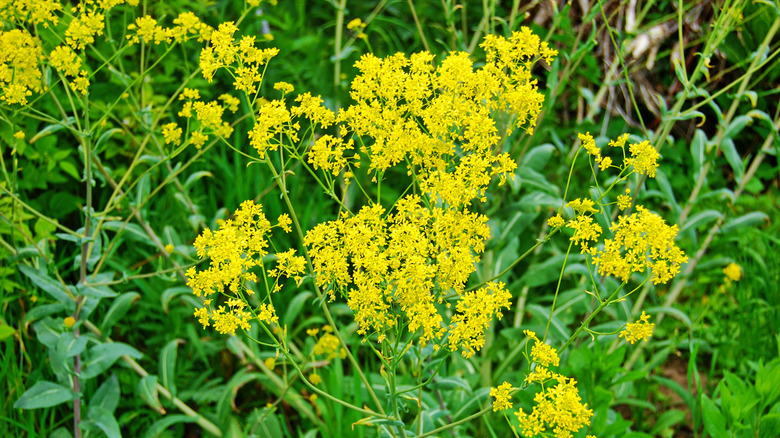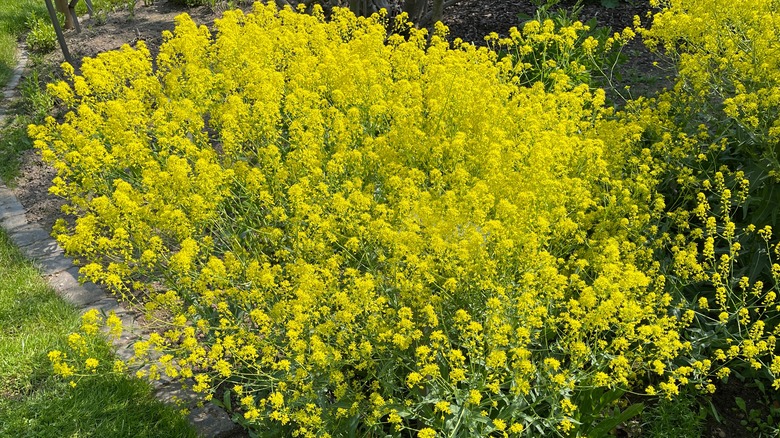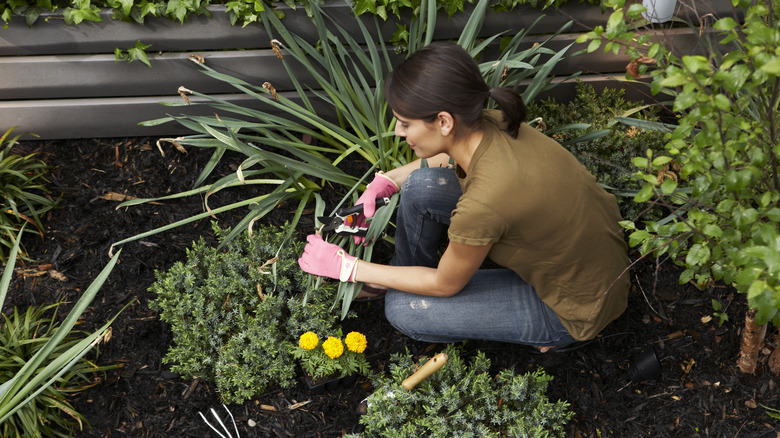Isatis Tinctoria: The Pollinator-Friendly Weed You Don't Want In Your Garden
Nobody could blame a gardener for falling in love with a plant that could attract pollinators to their garden. After all, pollinators are vital to the ecosystem and they bring pollen, an essential resource for your plants to help them grow and produce fruit. Isatis tinctoria, also known as dyer's woad due to its historical use in making blue dye, is known to attract pollinators. But you'll come to find it does more harm than good. Native to Russia, it is now invasive in western North America. Dyer's Woad is a fast-growing plant that grows in USDA zones 4 through 8 with minimal water in well-drained acidic to alkaline soil.
Isatis tinctoria can be identified by its golden-yellow clusters that grow on bluish-green stems with basal leaves. The abundant flower heads produce seeds at alarming rates, with each plant producing 350 to 500 seeds. It is listed and regulated as a noxious weed by the Washington State Noxious Weed Control Board because of how quickly it spreads. Growing this invasive and aggressive plant could spell trouble for the rest of your garden.
Why Isatis tinctoria is such a problem
Isatis tinctoria is a non-native, invasive, and aggressive grower. The seed can spread quickly because of how easily it's carried by wind or attaches to fur and clothing. This means that if it finds its way into your yard, this plant could grow and spread at a rate that is difficult to control. It is plant is competitive and dominant. Even though it requires minimal water, its roots can grow deep into the soil where it will begin to compete with everything that grows around it for essential resources.
Dyer's woad does not have positive uses aside from creating ancient dye and attracting pollinators. It has allelopathic properties which means it releases a harmful chemical that hurts the development of surrounding plants, so it can't be used for companion planting. If you are lucky enough to catch dyer's woad before it starts producing seeds, you can get rid of it by pulling it out by hand. Keeping up with regular mowing and yard maintenance is a good way to keep invasive plants from taking over your garden and will allow you to spot an invasion before it gets out of hand. You can use herbicides if the plant has spread over a large area or if you continue to see a resurgence.
How to prevent dyer's woad from taking over
Whether you were able to get rid of your first invasion by pulling or with the use of herbicides, you will need to monitor your yard and maintain a repetitive routine in order to prevent the plant from creeping back up. While mowing is effective in helping manage the spread of invasive plants, using a hover mower isn't a good idea and could send dyer's woad seeds dashing all over your garden.
To prevent this plant from returning, ensure you've done all you can to make sure its seed is gone for good. This means properly disposing of the plant in a trash bag if you pulled it out by hand. Don't dispose of these invasive plants in your compost or anywhere an animal could come into contact with it. If you used an herbicide, a once-off treatment won't do the trick in banishing this plant. You will need to apply follow-up treatments.
If you're desperate for a pop of color or something sweet to draw pollinators to your garden, coral honeysuckle and clematis are great alternatives for invasive plants. Whatever plants you choose, always think about the long-term health of your garden.


